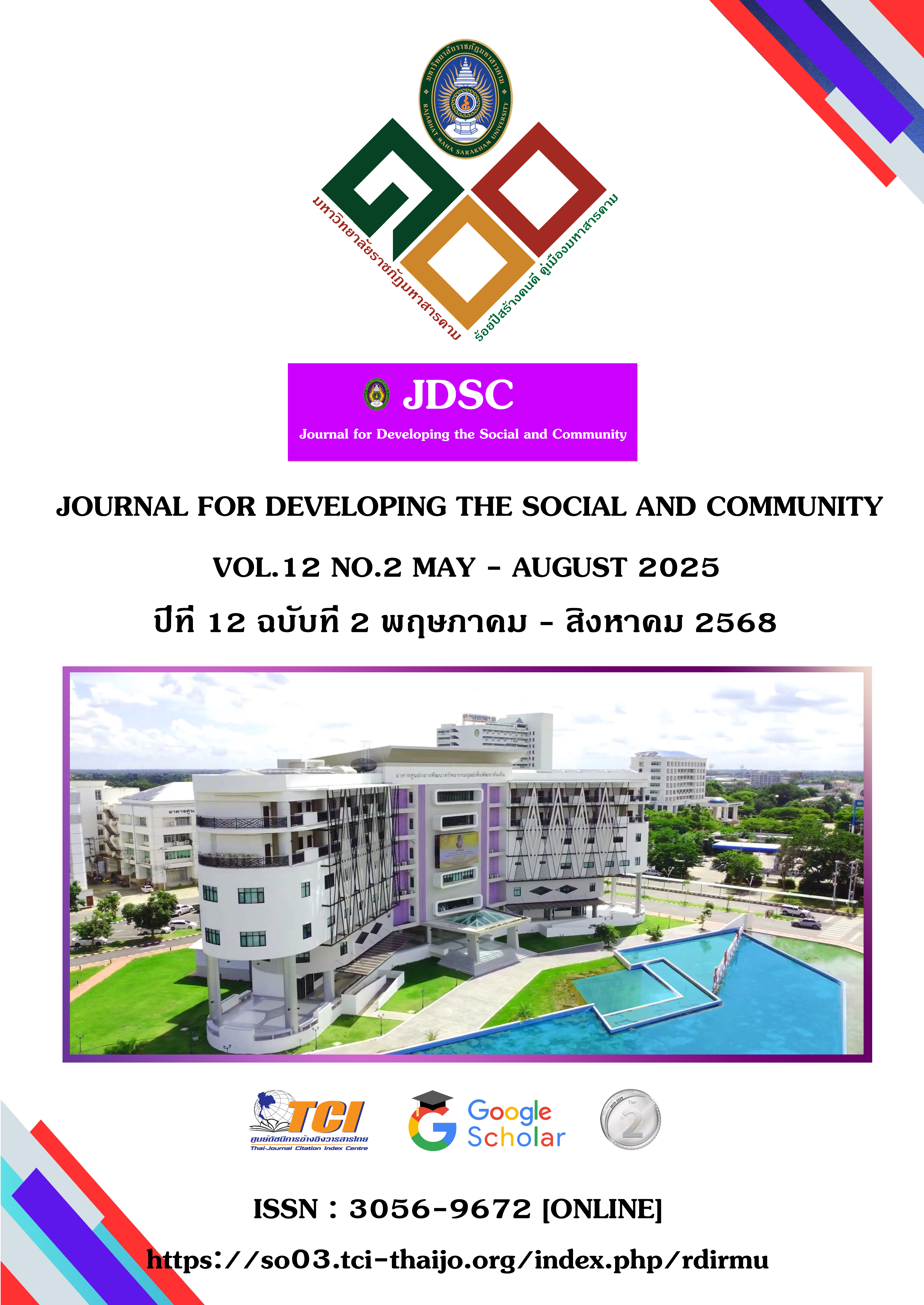Problems and traffic impacts from floating population in Pattaya
Keywords:
Floating population, Traffic problems and impacts, Public service provisionAbstract
Background and Objectives: Floating population is a major obstacle to the development of the quality of public services, especially in solving traffic congestion problems in big cities, including Pattaya, which is an important economic and tourism center of the country. As a result, many floating populations migrate to work in the area. This study, therefore, aims to study the number and distribution of floating populations and study travel patterns, problems, and traffic impacts from travel of floating populations.
Research Methodology: This research used a quantitative research method by counting the number of vehicles traveling through 6 points into Pattaya City between 6:30 - 8:30 a.m. and between 4:30 - 6:30 p.m. and using a questionnaire to collect data from a sample of 900 establishments/agencies with a hidden population working there. Statistics, frequency distributions, percentages, and maps showing the number and distribution were used to analyze the data.
Research results: The floating population in Pattaya City is 459,847 people, an increase of 68,308 people from the survey in 2023. Most of the floating population is daytime floating population, accounting for 59.14 percent, while the nighttime floating population is 40.86 percent. The distribution of the floating population is densest in Survey Area 3 and Survey Area 4, which are located in the south. The study results of the direction and routes with heavy traffic from the counting of vehicles traveling into Pattaya City, there are 6 points, consistent with the problems and impacts of traffic congestion both in the morning and evening on Sukhumvit Road and the route connecting the east and west sides of Pattaya City, especially in areas that are intersections.
Conclusion: The floating population in Pattaya City is 459,847 people, an increase of 68,308 people from the survey in 2023. As a result of the large floating population in the area, traffic congestion occurs both in the morning and evening on Sukhumvit Road, the connecting route on the east and west sides of Pattaya City, and the area that is the intersection.
References
กองนโยบายและแผนงาน สำนักการวางผังและพัฒนาเมือง กรุงเทพมหานคร. (2561). ประชากรแฝงในเขตกรุงเทพมหานคร ปี พ.ศ. 2557 – 2560. กรุงเทพฯ : กองนโยบายและแผนงาน สำนักการวางผังและพัฒนาเมือง กรุงเทพมหานคร.
กิจฐเชต ไกรวาส, จักรชัย สื่อประเสริฐสิทธิ์, ธาริกานต์ ธนัญชยะกุล, จุฬาลักษณ์ พันธัง และอาภาภรณ์ สุขหอม. (2563). รายงานฉบับสมบูรณ์ โครงการสำรวจและวิเคราะห์ข้อมูลทั่วไป จำนวนการกระจายตัว และวัตถุประสงค์ในการย้ายถิ่นของประชากรแฝงในเมืองพัทยา เพื่อใช้กำหนด แนวทางในการวางแผนพัฒนาเมืองพัทยา ระยะที่ 1. ชลบุรี: เมืองพัทยา.
กิจฐเชต ไกรวาส และอาภาภรณ์ สุขหอม. (2566). ความสุขของประชาชนจากการดำเนินงานในปีงบประมาณ พ.ศ. 2564 ของเมืองพัทยา. วารสารวิชาการศิลปศาสตร์ประยุกต์, 16(1), 1-14.
ชฎิล โรจนานนท์ และสัณฑวุฒิ ตุลารักษ์. (2568). การศึกษาประชากรแฝงเพื่อการจัดสรรเงินอุดหนุนที่เหมาะสมให้แก่องค์กรปกครองส่วนท้องถิ่น กรณีเทศบาลนคร. วารสารการวิจัยการบริหาร การพัฒนา, 15(1), 172-191.
ดิเรก ปัทมสิริวัฒน์, มีชัย ออสุวรรณ และเมรดี อินอ่อน. (2566). ดุลยภาพดุลยพินิจ : ประชากรแฝง ภารกิจของท้องถิ่นและเงินอุดหนุนรายหัว. มติชนออนไลน์, 28 กรกฎาคม 2566.
ประกาศคณะกรรมการการเลือกตั้ง เรื่อง การแบ่งเขตเลือกตั้งสมาชิกสภาเมืองพัทยา. (2565, 1 มีนาคม). ราชกิจจานุเบกษา. เล่มที่ 139 ตอนที่ 15 ก. หน้า 10-12.
สำนักงานสถิติแห่งชาติ. (2565). ประชากรแฝงในประเทศไทย พ.ศ. 2564. กรุงเทพมหานคร: กองสถิติพยากรณ์ สำนักงานสถิติแห่งชาติ. เข้าถึงได้จาก www.nso.go.th
. (2567). ประชากรแฝงในประเทศไทย พ.ศ. 2566. กรุงเทพมหานคร: กองสถิติพยากรณ์, สำนักงานสถิติแห่งชาติ. เข้าถึงได้จาก www.nso.go.th
อาภาภรณ์ สุขหอม และกิจฐเชต ไกรวาส. (2566). การย้ายถิ่นและวัตถุประสงค์การย้ายถิ่นในช่วงสถานการณ์แพร่ระบาดของเชื้อไวรัสโคโรนา 2019 ของประชากรแฝงในเขตมืองพัทยา อำเภอ
บางละมุง จังหวัดชลบุรี. วารสารชุมชนวิจัย มหาวิทยาลัยราชภัฏนครราชสีมา, 17(1), 1-13. https://doi.org/10.14456/nrru-rdi.2023.1
Lee, G. W., Lee, Y. J., Kim, Y. E., Hong, S. H., Kim, S. H., Kim, J. S., Lee, J. T., Shin, D. C., & Lim, Y. W. (2017). The study to estimate the floating population in Seoul, Korea. Environmental Health and Toxicology, 32(2), 1-5.
Moss, M. L. and Qing, C. (2012). The Dynamic Population of Manhattan. New York: Wagner School of Public Service, New York University.
Ping G., Wei Q., Sheng H. L., Zhen L., & Ze H. P. (2023). Moving to a healthier city? An analysis from China's internal population migration. Public Health, 11(2023), 1-14. DOI: 10.3389/fpubh.2023.1132908
Wei, Q., Shenghe L. and Haoran J. (2017). Calculation method and spatial pattern of urbanization rate of registered population in China. Geographical Research, 36(4), 616-632.
Xiaohong, J., Jian X., Cuihong Y., & Qingyun L. (2023). Can Talent Policies Attract Population Inflows? – An Empirical Analysis Based on Spatial Panel Modeling. Journal of Systems Science and Information, 11(6), 726-744. DOI: 10.21078/JSSI-E2023003
Downloads
Published
How to Cite
Issue
Section
License
Copyright (c) 2025 Journal for Developing the Social and Community

This work is licensed under a Creative Commons Attribution-NonCommercial-NoDerivatives 4.0 International License.
Articles that are published are copyrighted by the authors of the articles







